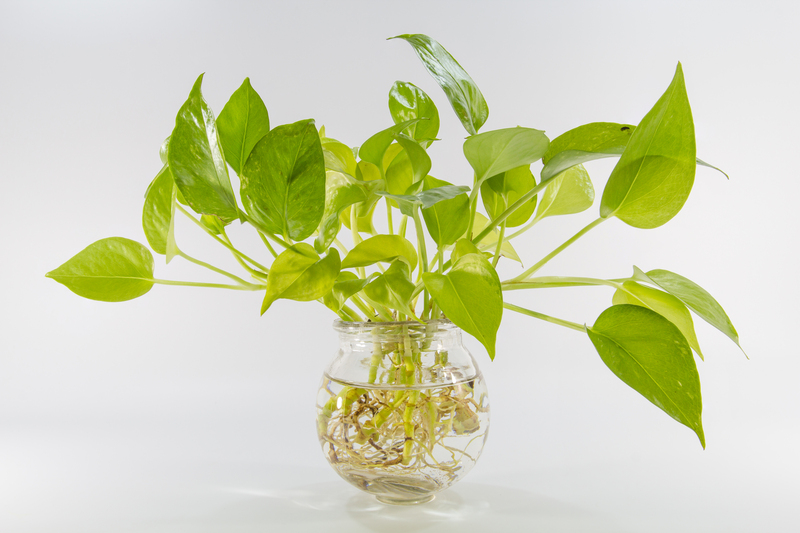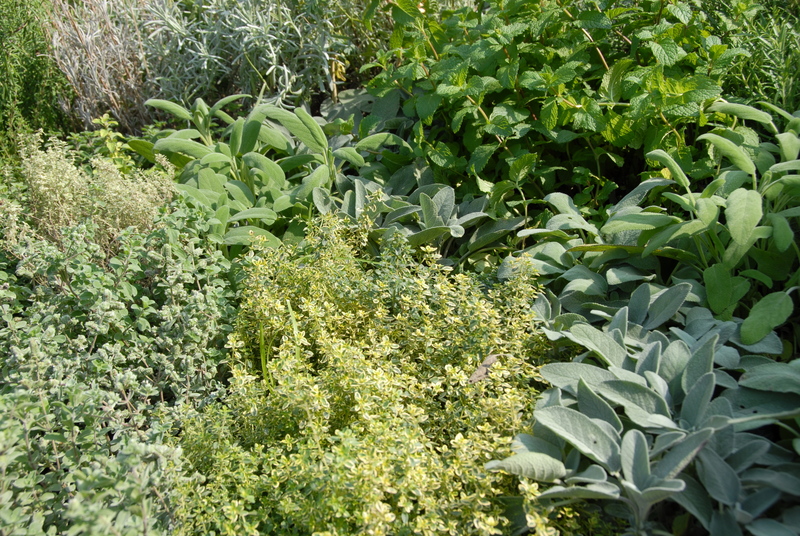Growing a Greener Future: Gardening's Climate Change Impact
Posted on 20/06/2025
Growing a Greener Future: Gardening's Climate Change Impact
In the face of an escalating climate crisis, individuals and communities worldwide are searching for practical solutions to help mitigate climate change and restore the health of our planet. Gardening, often seen as a peaceful pastime, has rapidly emerged as a surprisingly potent tool in the fight against environmental decline. From absorbing carbon dioxide to supporting biodiversity, the role of gardening in combating climate change is more profound than many realize. This article explores how cultivating gardens, whether in backyards, community plots, or urban spaces, can contribute to a greener, more resilient future for all.
Understanding the Connection Between Gardening and Climate Change
Climate change refers to long-term shifts in temperatures and weather patterns, mainly due to human activities such as burning fossil fuels and deforestation. These shifts cause rising sea levels, increased frequency of extreme weather events, and loss of biodiversity. As these challenges mount, the emphasis has shifted to nature-based solutions -- methods and techniques that leverage the natural world to reduce greenhouse gas emissions and adapt to changing conditions.
Among these methods, gardening for climate resilience stands out due to its accessibility and effectiveness. Gardens, whether large or small, can sequester carbon, conserve water, and create habitats for wildlife, making them pivotal in the movement toward restoring ecological balance and combating global warming.

Gardening's Climate Change Impact: Key Contributions
1. Carbon Sequestration and Reduction
Perhaps the most significant climate benefit of gardening is its ability to capture carbon dioxide from the atmosphere and store it in plants and soil, a process known as carbon sequestration. Trees, shrubs, and even grasses in home and community gardens act as miniature carbon sinks.
- Trees and shrubs absorb vast amounts of CO2 throughout their lives.
- Healthy soils store more carbon when enriched with organic matter.
- Gardens can offset urban carbon emissions by replacing paved areas with green spaces.
2. Enhancing Urban Biodiversity
Modern urban environments are notorious for habitat loss and biodiversity decline. Eco-friendly gardening helps reverse this trend by creating safe havens for rare and local species.
- Native plants in gardens attract birds, bees, butterflies, and beneficial insects.
- Pollinator-friendly gardens support threatened populations critical for food security.
- Diverse plantings build resilience against pests and diseases, reducing reliance on chemicals.
3. Mitigating Urban Heat and Reducing Energy Use
Plants release moisture into the air and provide shade, cooling their surroundings naturally--a phenomenon known as the urban heat island mitigation effect. Thoughtfully designed gardens:
- Lower surrounding air temperatures by several degrees during summer months.
- Shade buildings and reduce the need for air conditioning, lowering household energy use and emissions.
- Help cities adapt to more frequent and intense heatwaves due to climate change.
4. Supporting Sustainable Food Systems
Local food gardens, especially in urban environments, play an essential role in sustainable food production. Growing food close to home reduces the carbon footprint associated with transportation, packaging, and refrigeration.
- Homegrown produce means fewer food miles and fresher, healthier meals.
- Reduces reliance on industrial agriculture, a major contributor to greenhouse gas emissions.
- Promotes seasonal, Earth-friendly eating habits in communities.
How to Garden for Climate Action: Practical Strategies
While all gardens have inherent value, certain practices maximize gardening's environmental impact. Here are key strategies for growing a climate-smart garden:
1. Prioritize Native and Drought-Resistant Plants
Native species are best adapted to local soils and climate, requiring less water and fewer chemical inputs. Drought-tolerant plants, including succulents and Mediterranean herbs, are increasingly important as weather patterns shift.
- Research plants indigenous to your area and incorporate them into your landscape.
- Replace water-thirsty lawns with drought-resistant ground covers.
- Choose perennial over annual plants for their deeper roots and longer carbon storage.
2. Embrace Organic and Regenerative Practices
Organic gardening avoids synthetic fertilizers and pesticides, fostering healthier soils and minimizing pollution. Regenerative gardening techniques go further, actively restoring soil structure and fertility.
- Add compost, mulch, and green manure to build up soil organic matter.
- Use no-till or low-till methods to protect soil carbon and microbial life.
- Rotate crops and plant cover crops to prevent soil erosion and nutrient depletion.
3. Harvest and Use Rainwater
Rainwater capture is essential for reducing the environmental footprint of watering gardens. It also helps prevent urban runoff and erosion.
- Install rain barrels or cisterns beneath gutters to collect water for garden use.
- Design landscapes with swales or rain gardens to absorb and filter stormwater.
- Favor drip irrigation systems for more efficient watering.
4. Create Wildlife Habitat and Ecosystem Corridors
Gardens that provide year-round food, shelter, and nesting sites help bolster local wildlife populations. Ecosystem corridors--connected green spaces--are vital for species survival, especially in fragmented landscapes.
- Integrate flowering plants for pollinators and fruiting shrubs for birds.
- Set up insect hotels, birdhouses, and brush piles as habitats.
- Work with neighbors and community groups to link gardens and public green spaces.
5. Reduce, Reuse, and Recycle in the Garden
Sustainability in gardening extends beyond plant selection to the materials used. Opt for recycled, upcycled, or biodegradable products wherever possible.
- Compost garden and kitchen waste to close nutrient loops.
- Repurpose containers, wood, and other materials for beds and structures.
- Limit single-use plastics and synthetic chemicals.
The Role of Community and Urban Gardens in Climate Resilience
Urban environments are both contributors to and victims of climate change. Community gardens offer a unique opportunity to bring people together in the pursuit of shared climate solutions.
Community Gardens as Climate Action Hubs
- Increase access to healthy, local food, especially in "food deserts."
- Build strong social networks that foster environmental education and stewardship.
- Transform vacant lots and degraded spaces into vibrant ecosystems.
Urban Gardening and Green Infrastructure
Cities around the world are investing in green roofs, vertical gardens, and public edible landscaping. These interventions help cool city environments, improve air quality, and buffer against floods.
- Green roofs insulate buildings and reduce stormwater runoff.
- Vertical gardens allow food production in limited space while beautifying city walls.
- Public orchards and edible paths provide environmental and social benefits.
Education and Climate Engagement
Community-led gardening projects serve as living classrooms, teaching all ages about ecology, climate change, and sustainable living. These initiatives spark climate action from the ground up.
Challenges in Leveraging Gardening for Climate Adaptation
Despite the many benefits, using gardening to address climate change is not without hurdles.
- Lack of access to land or resources in underserved urban neighborhoods.
- Water scarcity due to longer and more frequent droughts.
- Pesticide and chemical use undermining biodiversity and soil health.
- Policy and zoning regulations that limit gardens in city environments.
Overcoming these barriers requires collective commitment, innovation, and supportive policies. Yet the potential rewards--a healthier planet and more resilient communities--make the effort worthwhile.
The Road Ahead: Gardening's Expanding Role in Climate Solutions
As more people recognize the climate impact of gardening, efforts to scale up green initiatives are gaining traction worldwide. Governments, NGOs, and grassroots movements increasingly support regenerative urban agriculture, pollinator corridors, and native landscaping. These projects, large and small, are contributing to a climate-resilient, greener future.
Getting Started: Tips for Gardening with the Climate in Mind
Ready to make your gardening a force for positive climate action? Here are some beginner-friendly tips:
- Start small. Even a windowsill herb garden can make a difference.
- Grow what thrives. Choose plants that suit your local climate and require minimal inputs.
- Compost. Turn kitchen scraps into valuable soil food instead of sending them to a landfill.
- Mulch. Use organic mulches to conserve water, sequester carbon, and suppress weeds.
- Avoid synthetic chemicals. Foster beneficial insects and biodiversity instead.
- Connect and learn. Join community gardening programs, garden clubs, or online forums to share knowledge and resources.

Conclusion: A Greener Tomorrow Grows from Gardens Today
In the urgent fight against climate change, every individual action counts--and the garden is a powerful place to start. The impact of gardening on climate change extends far beyond the beauty of blooming flowers or the satisfaction of picking fresh produce. By sequestering carbon, fostering biodiversity, supporting local food systems, and creating climate-resilient spaces, gardeners everywhere are cultivating hope and solutions for a sustainable future.
So, whether you have a sprawling backyard, a tiny urban patio, or a shared community plot, remember: Every seed planted is a step toward growing a greener, climate-positive world.
Frequently Asked Questions: Gardening and Climate Change
How exactly does gardening help reduce climate change?
Gardening helps by capturing carbon dioxide in plants and soil, reducing urban heat, supporting biodiversity, and lowering food miles. Adopting sustainable gardening practices further increases these benefits.
What are the best plants for a climate-friendly garden?
Native species, drought-tolerant plants, and deep-rooted perennials are best. These require less water, store more carbon, and support local wildlife.
Can community gardens really make a difference?
Yes. Community gardens have a measurable impact by reducing emissions, improving green space in cities, providing local food, and educating citizens about sustainable practices.
How can I start a green garden if I don't have much space?
Container gardening, vertical gardens, and joining a community garden are all viable options for climate-friendly gardening, even in small or urban spaces.



